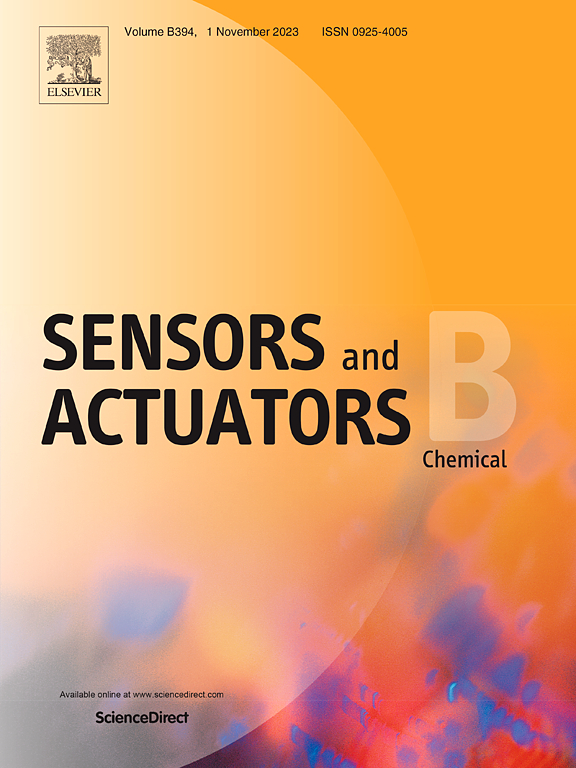Classification of normal, AML, and ALL bone marrow smears based on deep learning and hyperspectral microscopic imaging
IF 8
1区 化学
Q1 CHEMISTRY, ANALYTICAL
引用次数: 0
Abstract
Bone marrow smear examination is critical in leukemia diagnosis, yet traditional manual methods face reliability and efficiency challenges. This study proposes a multimodal open-set recognition method that integrates deep learning with hyperspectral microscopy imaging. By analyzing the proportions of different cell categories, the method automatically classifies bone marrow smears into normal, acute myeloid leukemia (AML), and acute lymphoblastic leukemia (ALL). Bone marrow smear samples from 120 patients were collected and imaged using a hyperspectral microscopic imaging system. Individual cells were successfully segmented using U²-Net and image registration algorithms, resulting in spectral and image data for a total of 6606 cells. Based on these data, two one-dimensional convolutional neural networks (1D CNNs) architectures were designed for spectral data, two two-dimensional convolutional neural networks (2D CNNs) architectures were created for image data, and a dual-branch heterogeneous architecture consisting of parallel spectral and image branches was developed to simultaneously process both spectral and image data. Experimental results demonstrated that the optimal dual-branch heterogeneous architecture model based on fused spectral-image data achieved an accuracy of 91.57 % in open-set external validation, and attained 100 % accuracy in distinguishing normal, AML, and ALL in a subset of 19 bone marrow smear samples. Thus, by combining deep learning and hyperspectral microscopy imaging technology and introducing an open-set recognition method, this study achieved high-accuracy differentiation of bone marrow smears, significantly enhancing leukemia diagnostic efficiency and accuracy, and providing new insights and methods for leukemia diagnosis and classification.

基于深度学习和高光谱显微成像的正常、AML和ALL骨髓涂片分类
骨髓涂片检查在白血病诊断中起着至关重要的作用,但传统的手工方法在可靠性和效率上都面临着挑战。本研究提出了一种将深度学习与高光谱显微镜成像相结合的多模态开集识别方法。该方法通过分析不同细胞类别的比例,自动将骨髓涂片分为正常、急性髓性白血病(AML)和急性淋巴细胞白血病(ALL)。收集120例患者的骨髓涂片样本,使用高光谱显微成像系统进行成像。利用U²-Net和图像配准算法对单个细胞进行了成功分割,得到了6606个细胞的光谱和图像数据。在此基础上,针对光谱数据设计了两种一维卷积神经网络(1D cnn)架构,针对图像数据创建了两种二维卷积神经网络(2D cnn)架构,并开发了一种由光谱和图像并行分支组成的双分支异构架构,以同时处理光谱和图像数据。实验结果表明,基于融合光谱图像数据的最优双分支异构架构模型在开放集外部验证中准确率达到91.57%,在19个骨髓涂片样本子集中区分正常、AML和ALL的准确率达到100%。因此,本研究结合深度学习和高光谱显微镜成像技术,引入开放集识别方法,实现骨髓涂片的高精度鉴别,显著提高白血病诊断效率和准确率,为白血病诊断分类提供新的见解和方法。
本文章由计算机程序翻译,如有差异,请以英文原文为准。
求助全文
约1分钟内获得全文
求助全文
来源期刊

Sensors and Actuators B: Chemical
工程技术-电化学
CiteScore
14.60
自引率
11.90%
发文量
1776
审稿时长
3.2 months
期刊介绍:
Sensors & Actuators, B: Chemical is an international journal focused on the research and development of chemical transducers. It covers chemical sensors and biosensors, chemical actuators, and analytical microsystems. The journal is interdisciplinary, aiming to publish original works showcasing substantial advancements beyond the current state of the art in these fields, with practical applicability to solving meaningful analytical problems. Review articles are accepted by invitation from an Editor of the journal.
 求助内容:
求助内容: 应助结果提醒方式:
应助结果提醒方式:


